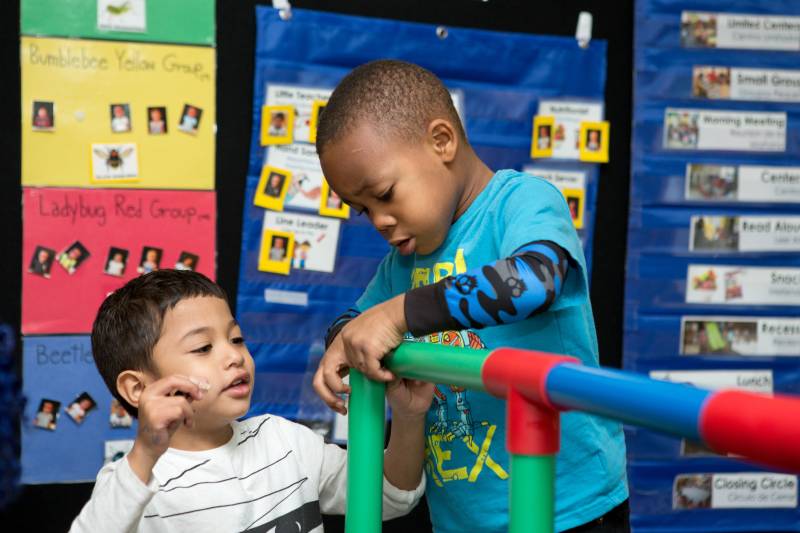“Too often we refer to play as just play,” said Kristine Mraz, adding that the “just” implies that it has no purpose or value. As an early childhood educator, instructional coach and coauthor of Purposeful Play, Mraz advocates for incorporating guided play as a central aspect of the classroom rather than an activity reserved for recess. According to Mraz, guided play broadly refers to educational activities that are gently steered by an adult using open ended questions and prompts, while still giving children the freedom to explore a learning goal in their own way.
The benefits of guided play are well-documented. “Teaching children through guided play supports key aspects of their learning and development at least as well, and sometimes better than the traditional direct instruction they usually receive at school,” noted Mraz. Studies indicate that children who engage in play-based learning often outperform their peers academically and socially. Additionally, children who attended play-based early childhood centers were less likely to be referred for services for their social-emotional needs.
But the misconception that play detracts from learning can prevent schools and teachers from integrating it more. Schools often limit play to recess or the end of the day, thus missing its potential as a robust instructional method. “Play is the journey that brings us to standards,” Mraz said “It’s not a time of day. It is a method.” During a talk at The Educator Collaborative 2023 Gathering, Mraz outlined an approach known as the play workshop structure that can help teachers incorporate play into subjects like reading, writing and math. This approach includes three main components: choosing, gathering and clean-up.
Choosing: Pick your play
In the choosing step of the play workshop structure, students are given the autonomy to select the activity they’d like to do. “We can invoke a playful spirit any time we bring up choice. The more choice, the more it feels like play,” said Mraz. Many teachers find it effective to use centers or stations to offer activity choices in the classroom.


